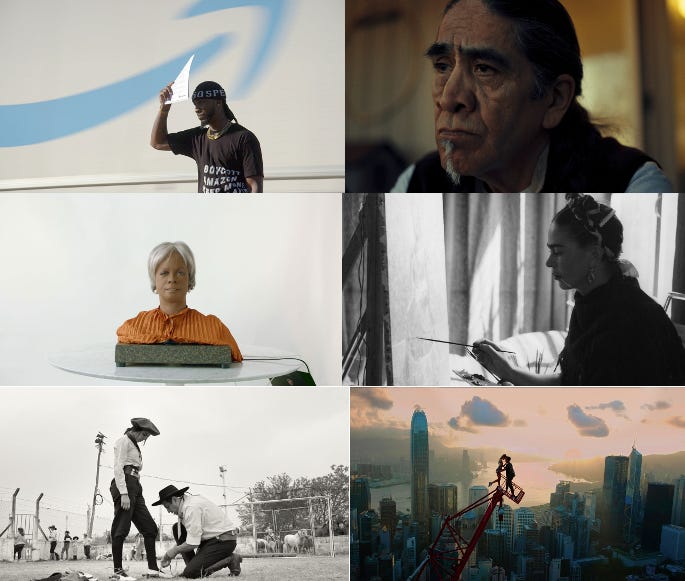
by Anthony Kaufman | republished from Anthony Kaufman’s Substack
Another Sundance; another moment of hope.
As many of us head to the snowy, sub-freezing temperatures of Park City to brave the bitter cold and slippery black ice to watch movies (is there any greater endurance test of one’s commitment to independent film?), there’s always the question of how programming choices and entertainment company mandates will come together to set the pace for the year. If Netflix decides to plunk down $10 million to acquire a political documentary (like they did for “Knock Down the House” in 2019), well, that might be a sign of things to come. But based on the current state of the business, no one really thinks that’s going to happen.
As a documentary producer told me recently, “The most important thing in the independent nonfiction world right now is not developing new directors. It’s developing new distribution mechanisms. We can always think about visionary filmmakers, but we need to think about who are the visionaries in distribution who are going to crack the distribution code.”
Personally, I’m excited to see a lot of visionary documentaries at Sundance this year. There are filmmakers with new films whose work I’ve greatly admired in the past (like directors Yance Ford, Brett Story, Stephen Maing, Pete Sillen, Lana Wilson, Michael Dweck and Gregory Kershaw, Jesse Moss and Amanda McBaine, and Tony Gerber, and producers such as Jess Devaney, Kyle Martin, Dan Cogan, Kellen Quinn, and Charlotte Cook), and I’m always eager to discover new voices.
But as the quote above reflects, the documentary industry needs distribution mavericks as much as filmmaking ones.
I also wonder and worry if my personal excitement might run inversely proportional to that of acquisition executives. In looking over the Sundance nonfiction program, I am happy to see a lot fewer celebrity docs across the Documentary Competition (maybe only one, if you can count “Frida,” and you probably can’t) and the entire selection as a whole—sure, there’s the Luther Vandross, DEVO, Brian Eno, and “We are the World” music docs, and Will Ferrell and Christopher Reeve make appearances, but neither of these look like conventional bio-docs—so by and large, most of the films fall outside of those conventional boxes that I’ve complained about here and here. Which is great!
But that also means most of the docs are likely not going to be a part of the streamers’ new “broader remit for popular films for their audience
[that are]… as global as possible — global in the way that everyone knows who Michael J. Fox is,” as producer Julie Goldman told IndieWire recently.
So where does that leave most of the documentaries that don’t already have distribution after their warm Sundance receptions?
In speaking to me for Filmmaker Magazine, Diane Becker, producer of King Coal and Navalny, said filmmakers need to “reset and redirect their expectations” and raise funds for distribution early in their financing plans. “We all need to start thinking more outside the box and understand who our primary audience is and figure out meaningful and new ways to engage with them.”
That’s never easy, of course, and what direct-to-consumer/DIY distribution may give filmmakers in freedom and retainment of rights is offset by the tremendous time and energy that goes into it. Then again, a distribution deal for low to no money may not help documentary filmmakers much either as they try to sustain themselves.
Last year at this exact time, I worked with Distribution Advocates on this invaluable report, “Let’s Make a Deal—Or Not,” which is a first data-driven step at examining the state of doc acquisitions. For me, one of the most salient points is how the “top” 1-2% of all completed documentaries—those that land a coveted Sundance spot and a distribution deal—aren’t necessarily going to break even.
Amy Hobby, co-founder of Distribution Advocates, said the data pool was too small to make any definitive claims, but there was a large divide between films that fully recouped and those that recouped less than a quarter of their budget. “There was nothing in the middle,” she said. (Notably, as the report states, only one documentary directed by filmmakers new to Sundance made a deal out of the 2022 festival.) Such figures certainly don’t make for a healthy industry. Or healthy filmmakers.
Speaking of which, in speaking to a number of documentary filmmakers recently, I was struck not just by how difficult it was to figure out distribution for their movies, but also how dire their personal financial situation was—whether suffering under debt or having to live with friends or family to save money. Maybe that’s always been the case: I’ve been told many times that documentary filmmakers don’t go into the field to make money. But if we want documentaries, we need to find a better way to support their makers.
